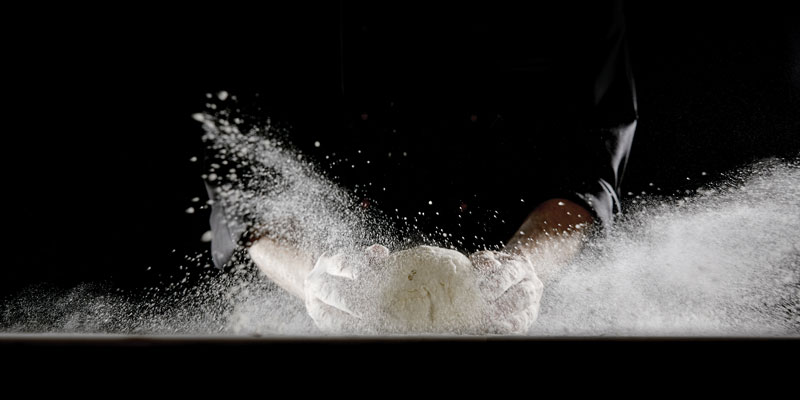
Developing tire compounds is like baking bread. Mix together a few key ingredients and you’ve got the basic recipe. Flour, water, yeast and sugar in the right amount and order will produce your basic white bread. Add in some extras, like sweeteners, seeds and butter, and you will create changes in taste and texture.
Commercial truck tires have basic ingredients too. It all starts with a mixture of mostly natural rubber and/or some synthetic rubber, filler materials (typically carbon black and silica), waxes and oils as well as various chemical additives that promote elasticity, eco-friendliness and durability. One of the main ingredients is carbon black, a sooty by-product of the burning of oil that gives tires their black coloring. If rubber were not mixed with an additive like carbon black, a tire’s tread would be too soft and have no resistance to abrasion.
Silica, a basic component of ordinary beach sand, is traditionally used to enhance cut/chip/chunk resistance. Tire engineers discovered in the 1970s that rolling resistance could be reduced, and durability increased, by replacing some of the carbon black with reacted silica in light tread vehicles’ tires. But there was a trade-off, especially when combined with natural rubber tread compounds in commercial tires—the lower rolling resistance could potentially affect abrasion and wear resistance.
Today, compounding engineers at Cooper Tire work to develop the optimum mixture of ingredients that will create the perfect functionality for a particular application.
Compound development has multiple stages. According to Phil Mosier, Cooper Tire’s manager of commercial tire development, the engineering team at Cooper puts mixes through a series of test suites designed to correlate with conditions the rubber compound will see during the life of the tire. The most promising rubber compounds are vulcanized and tested under static and dynamic conditions. Cooper’s lab equipment is designed to test small rubber samples at different frequencies under various temperature settings from minus 148 to 212 degrees Fahrenheit.
“Tests to examine factors such as tensile strength ensure that compounds perform as expected and meet or exceed industry safety standards. After the tire is built and cured, it moves to wheel testing on a simulator that mimics real world speeds and conditions,” Mosier said. “Once we are satisfied, field engineers work directly with customers to study how well the tires are performing in the day-to-day environments against our own control products as well as that of the competition.”
Here’s a perfect example: Waste haulers, in major cities like New York, Chicago and Los Angeles, have a very specific job, and in the course of their work, turn tight corners and do a lot of starting and stopping. The application requires a compound that provides excellent wear resistance. Mosier recalled that Cooper developed a tire compound for waste hauler applications, and it was performing well in testing, but frequent contact with curbs was causing shoulder damage. The solution was changing some of the internal polymers and fillers to improve the tear resistance of the tread cap without affecting the other properties of the tire.
Another example is long haul operations through Northern Canada, where snow and icy conditions are the norm, and drive tires need to have superior traction. Here, tread compounds need to provide traction plus low rolling resistance even when the rubber is cold.
Cooper recently launched its Severe Series WBA commercial truck tire that provides long miles to removal, while handling the harsh operating conditions found in construction truck applications. Special cut, chip and chunk resistant compounds, plus Cooper’s Scrub Guard technology, help the tire withstand scrubbing, curbs, and other obstacles typically encountered during operations to ensure longer tire life while maintaining casing integrity. For those in long-haul operations, Cooper designed the Pro Series features tires that are ultra-fuel-efficient. A combination of tire design, compounding and construction created tires that exceed SmartWay standard requirements by 15% and meet the EPA’s greenhouse gas (GHG) emissions requirements set for 2021.
“Tread design is married to a specific compounding formulation,” Mosier said. “On a truck, you have steer, drive and trailer tires. With three different sets of tires in the setup, each will have different compounds. There can be different tread caps being utilized, and each tire set has a specific need requirement. There might be a tire that would work in all three positions, but it would have a very limited application.
“One of the biggest misconceptions that tire buyers have is that all rubber compounds are the same,” concluded Mosier. “That couldn’t be further from the truth. At Cooper, we never stop working to improve our tires. It all starts with the needs of the customer and ends with our work in the lab to come up with a solution.”
Contributed by Cooper Tire.
For more on this topic, check out Choosing the right truck tire for the right application.














